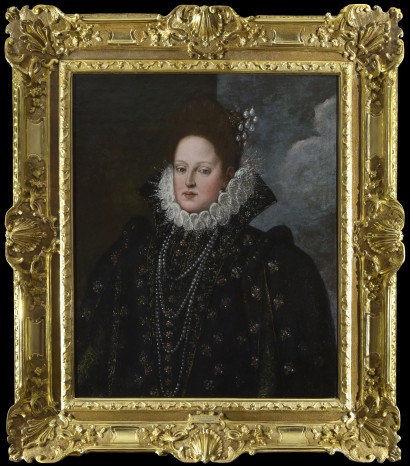

Dated to early 17th century, and only once shown publicly, the "Portrait of Margherita Gonzaga" will be on display at the Royal Łazienki. The work is credited to Peter Paul Rubens, one of the greatest artists of the Baroque era. There is a legend associated with the painting, which has been passed orally on to its successive owners.
The "Portrait of Margherita Gonzagi" will be shown in the West Apartment of the Myślewicki Palace from 31 August to 31 October 2017 (you need to buy a ticket to enter the building; visits on Thursdays are free of charge). This will be the second display of this work of art in history. As of now, the only museum exhibition of the work ever held took place in Cologne in 1977 to commemorate the 400th birthday of Peter Paul Rubens. It is him, one of the most prominent baroque painters, who is believed to be the author of the "Portrait of Margherita Gonzaga".
The authenticity of the painting was confirmed by experts studying Rubens' work – among others by the founder of the Corpus Rubenianum, professor L. Burchardt and professor H. Voss, who considered the image to be "a distinctive handwork of P. P. Rubens."
The painting, a gold dust among collectors, comes from private collections and was subsequently kept in the hands of illustrious families of Italian, English, French and Swiss origin.
Most likely, Rubens painted it in the period between 1602-1604, several years after receiving the mastership title of the Antwerp Guild of Saint Luke. Margherita Gonzaga, who was portrayed in the painting, held the title of the Princess of Mantua, as well as the Duchess of Ferrara, Modena and Reggio, by virtue of marriage with Alfonso II d'Este. After her husband’s death in 1597, she returned to Mantua as Madama Serenissima di Ferrara. The Princesss’ portrait was most likely ordered by her brother, Duke Vincenzo Gonzaga. In 1600, Rubens, taking advantage of his connections with Duke’s social circle, recommended himself as a talented portraitist and went with the ducal entourage from Venice to Mantua, where he became the court painter of the Gonzaga family. At this time, he met the first minister of King Philip III, Duke of Lerma, who was to be the recipient of a portrait exhibiting Margherita’s attractiveness as the potential future wife.
Their marriage, however, was not concluded. In 1603, the Duchess travelled to the St. Ursula’s monastery, which she personally founded, and spent the rest of her life behind its walls. She died there on 6 January 1618.
At the time of the portrait’s creation, Margherita Gonzaga was around 40 years old. The prominence of the figure, presented in bust view, is highlighted by lavishly embellished robes in Spanish fashion: lace ruff supported by tall collar and gold-embroidered dress, richly encrusted with precious gemstones and pearls.
It is also worth mentioning the legend which is orally passed on to successive owners of the work. According to the oral tradition, the painting was presented as a gift to Sir Oliver Hamilton Augustus Hart-Dyke and added to his collection. For reasons that are not clearly known, Lord’s wife scribbled a curse on the reverse of the canvas, which haunted her husband also after her death. In an act of madness, the Lord allegedly threw the painting out of the window during a ravaging storm. The piece was exposed to rain, impaled on fencing. It was saved by servants, who took the painting to a stable and covered it with horse saddle-cloth.